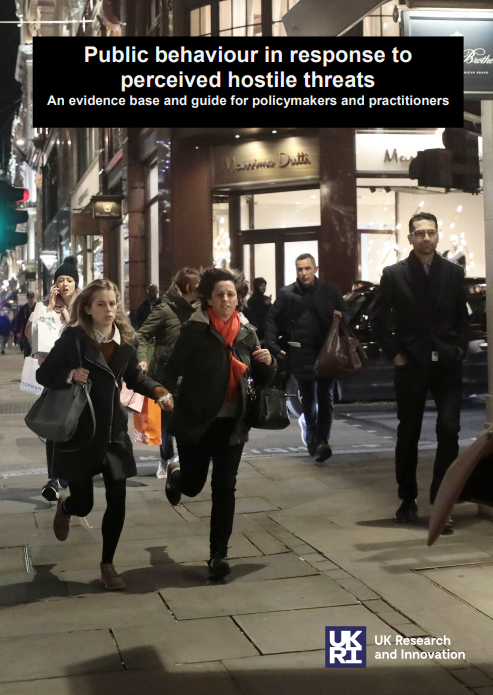Public behaviour in response to perceived hostile threats
An evidence base and guide for policymakers and practitioners
cite
Drury, J., Arias, S., Au-Yeung, T., Barr, D., Bell, L., Butler, T., Carter, H., Choudhury, S., Eriksson, J., Neville, F., Philpot, R., Radburn, M., Reicher, S., Ronchi, E., Stott, C., Telga, M., &
Templeton, A. (2023). Public behaviour in response to perceived hostile threats: An evidence
base and guide for practitioners and policymakers. University of Sussex. https://
dx.doi.org/10.20919/VJVT7448

Executive summary
Background: Public behaviour and the new hostile threats
Civil contingencies planning and preparedness for hostile threats requires accurate and up to date knowledge about how the public might behave in relation to such incidents. Inaccurate understandings of public behaviour can lead to dangerous and counterproductive practices and policies.
There is consistent evidence across both hostile threats and other kinds of emergencies and disasters that significant numbers of those affected give each other support, cooperate, and otherwise interact socially within the incident itself.
In emergency incidents, competition among those affected occurs in only limited situations, and loss of behavioural control is rare.
Spontaneous cooperation among the public in emergency incidents, based on either social capital or emergent social identity, is a crucial part of civil contingencies planning.
There has been relatively little research on public behaviour in response to the new hostile threats of the past ten years, however.
The programme of work summarized in this briefing document came about in response to a wave of false alarm flight incidents in the 2010s, linked to the new hostile threats (i.e., marauding terrorist attacks).
By using a combination of archive data for incidents in Great Britain 2010-2019, interviews, video data analysis, and controlled experiments using virtual reality technology, we were able to examine experiences, measure behaviour, and test hypotheses about underlying psychological mechanisms in both false alarms and public interventions against a hostile threat.





